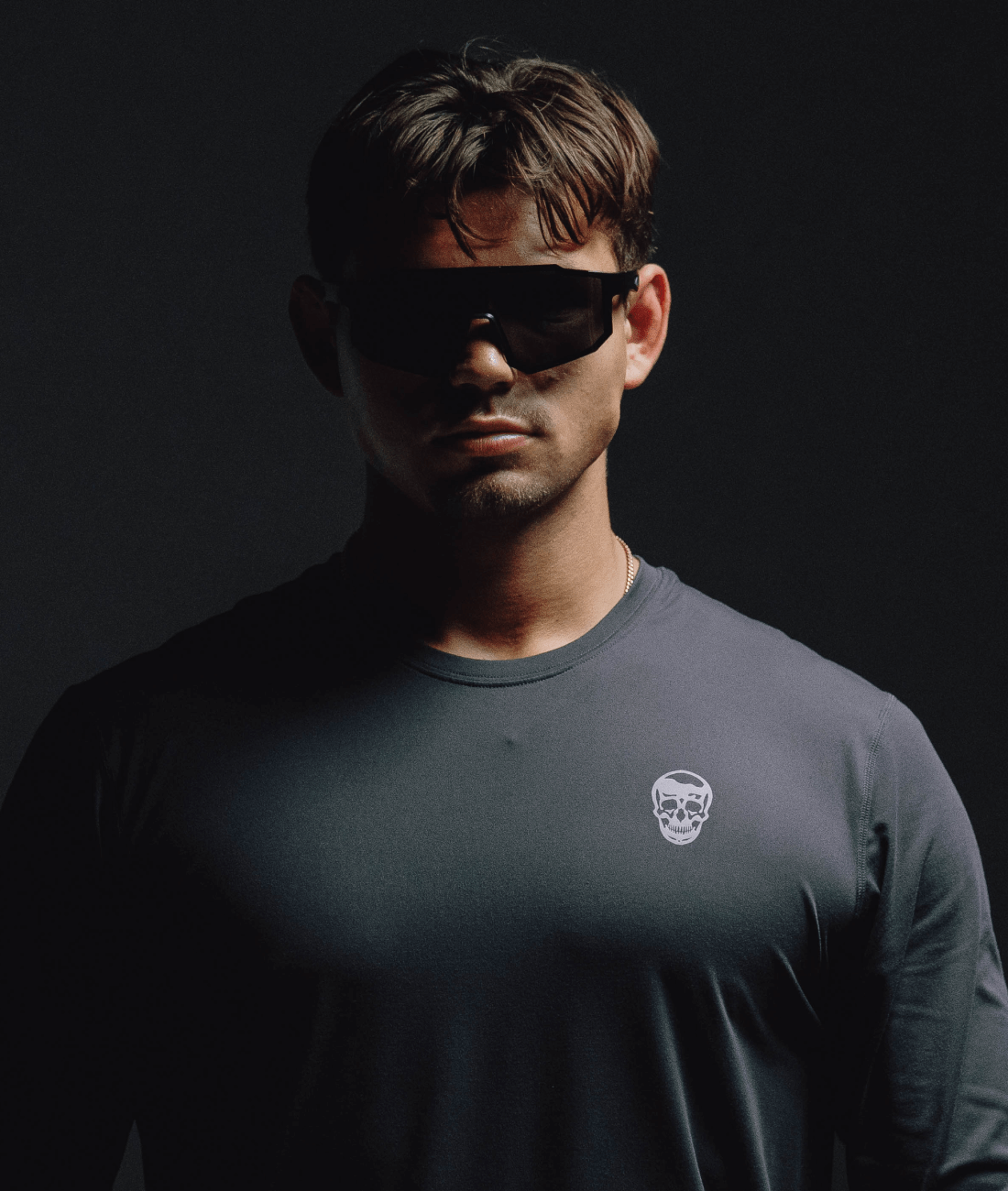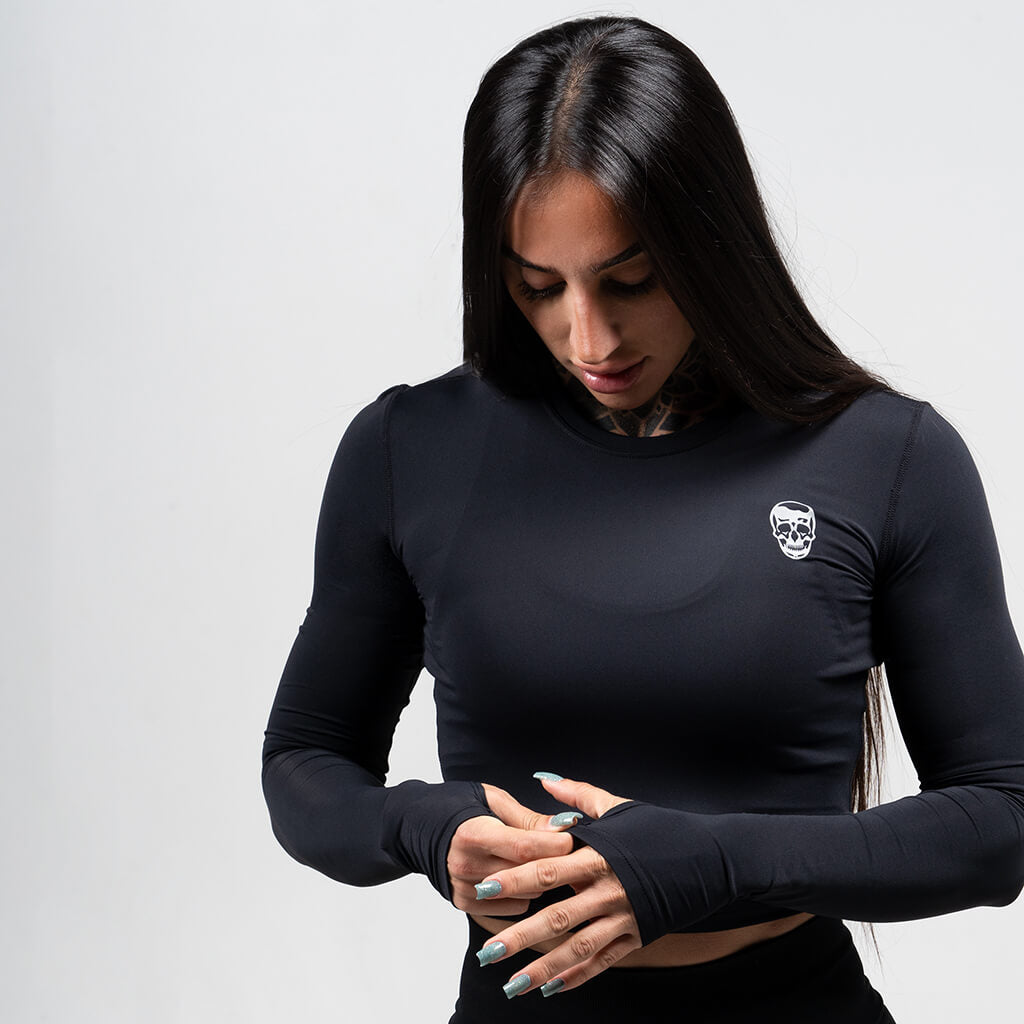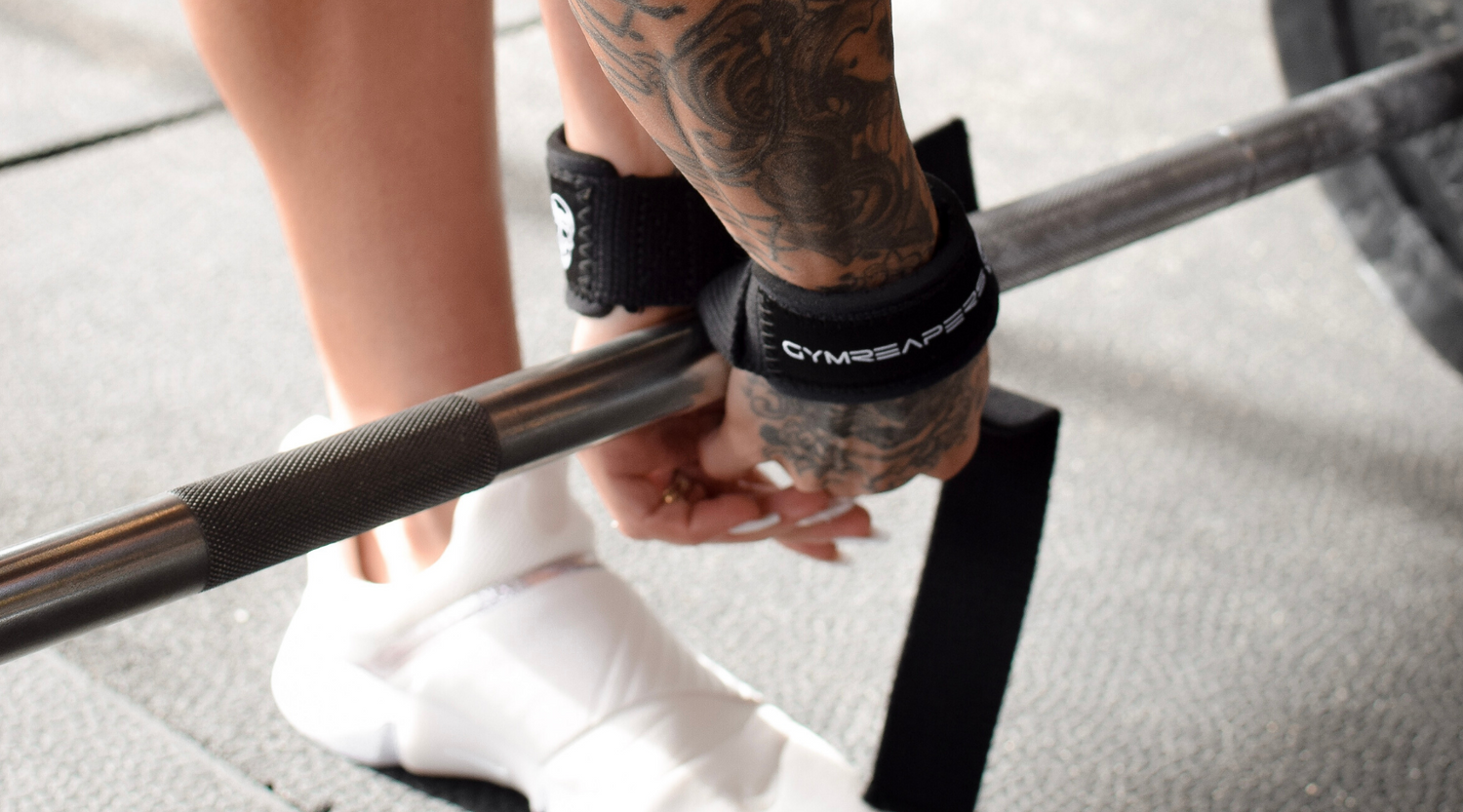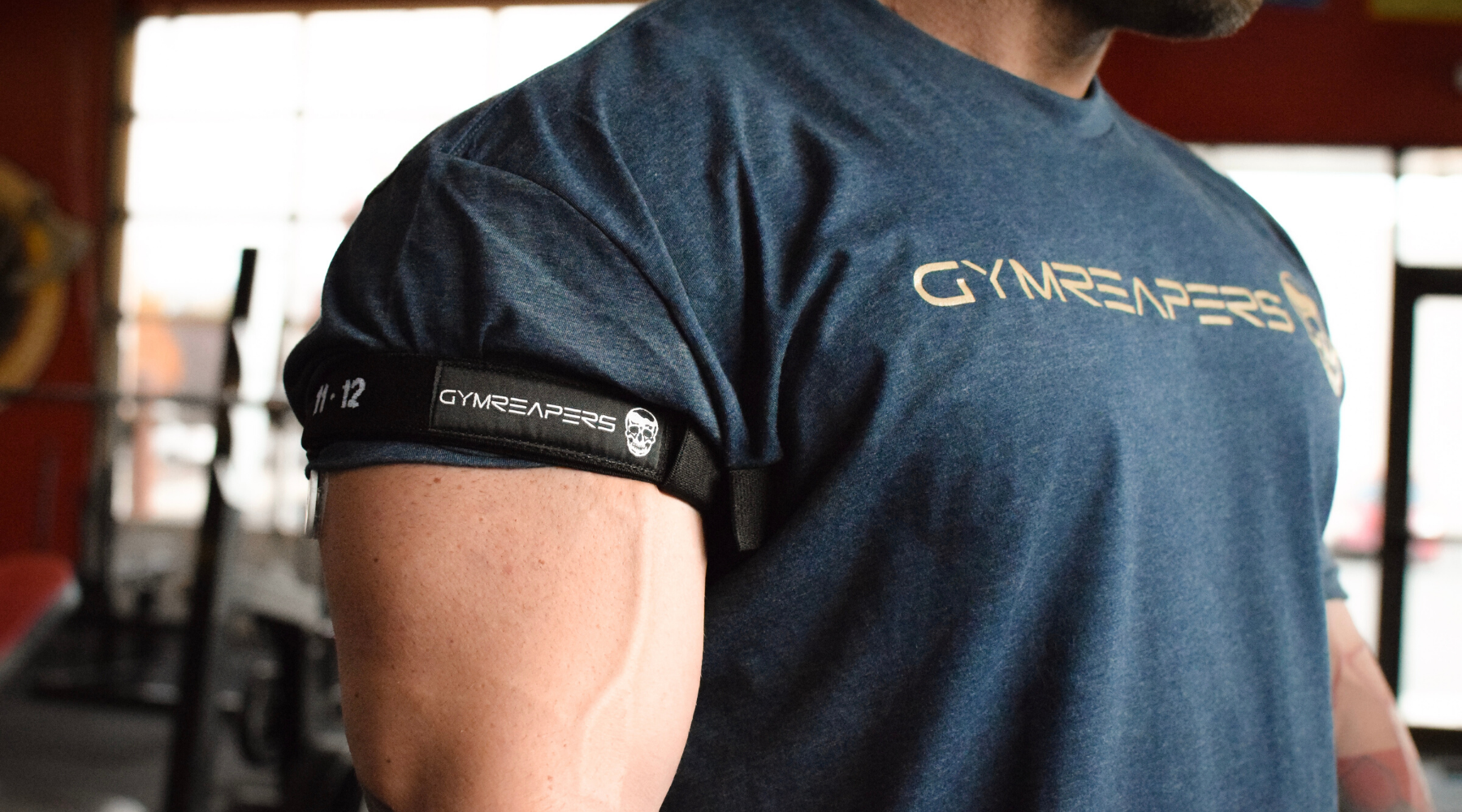One of the biggest questions people ask is “should I use lifting straps?”. The answer will vary from person to person, based on their pursuit. For example, a competitive powerlifter will use straps for a different purpose than an average gym-goer who wants to pack on some muscle.
The purpose of any fitness lifting straps is to decrease the demands of the grip so you can focus more on other aspects of the lift.
Knowing how to use lifting straps properly is also an important aspect to consider. Again, the decision to use straps depends on what your training goals are overall, as well as what you’re trying to accomplish in a specific workout.
With that in mind, let’s go through a few different scenarios to help you get an idea of how to start evaluating your needs. This will help you figure out when you ought to use straps in your own training, and which straps will best suit your needs.

When should you use straps?
1) In Powerlifting
A powerlifters' goal is simple — get as strong as possible in the BIG 3: squat, deadlift, and bench press. Given that grip strength isn’t a limiting factor in the squat and bench press, powerlifters use lifting straps for deadlifts and accessory work.
For example, if you have a particularly grip-heavy training session you may want to conserve your grip at times so you don’t stifle the amount of total training volume (by prematurely exhausting your grip). Or you may just want to go heavier on your deadlifts than you could otherwise to help your body get used to heavier loads.
Let’s say a mixed grip has made your elbow a bit cranky when you deadlift, for example. You could use lifting straps to continue deadlifting heavy until your elbow recovers (provided a double overhand grip doesn’t exacerbate the issue). This way you can keep training hard without aggravating your elbow more.
Keep in mind, you can’t use straps during a powerlifting meet or competition, so make sure you do a fair amount of your deadlifting without straps. As a powerlifter, you can, however, use Gymreapers wrist wraps and knee sleeves in any USPA sanctioned competition.
2) For Olympic lifting
For Olympic lifters, the principle is the same. If you want to build up a certain aspect of the lift without tiring out your grip then you will likely use lifting straps. This can be especially useful if a lift is solely being done to practice technique.
Olympic lifting isn’t about who’s strongest, it’s about who can lift the most weight. This is a subtle, but important point. Granted, the same could be said for powerlifting.
However, Olympic lifts are significantly more technical, so this concept becomes more important with Olympic lifting. Between two lifters with identical levels of strength, the lifter with the better technique will lift more weight. As such, Olympic lifters need loads of technique practice under their belt, which means lots and lots of reps.
In this case, Olympic lifting straps will allow you to put in a lot more heavy technique practice without banging up your hands. Since the goal is to move as much weight as possible on the platform, the specifics of when an Olympic lifter uses straps will depend on what weak points they need to shore up.
However, the principle is the same as we’ve discussed — if your grip is limiting your ability to tackle your weak points as hard as you want, use lifting straps. Unless your weak point is your grip of course, in which case you’ll want to do a good amount of strapless grip specific work. Just like powerlifting, straps might be used for accessory work.
3) Bodybuilding
For those looking to build muscle the answer is more definitive. With Olympic lifting and powerlifting the answer to, “When should I wear straps?” is very much “it depends”. However, when the goal is to simply build muscle, using lifting straps is pretty cut and dry.
Since you don’t care about grip strength so long as it doesn’t limit your capacity to build muscle, you don’t really have to worry about your grip strength lagging behind too much.
Use lifting straps anytime you find the grip limiting your ability to optimally hit the target muscle. For example when doing dumbbell rows, many have a hard time really feeling their latissimus dorsi contract because their biceps and forearms take over. This means the row isn’t nearly as effective at building upper back mass as it could be.
You can get a better mind-muscle connection with your lats when your grip is spared. This makes the exercise more effective. Furthermore, your lats are bigger and stronger than your forearms. This means the grip will fatigue before you’ve optimally worked your lats.
Can you build a massive upper back without straps? Sure. But you’re probably leaving some back gains on the table by doing so. Another good use for straps is when doing Meadows Rows. Here’s a demonstration:
Because you hold the fat end of the barbell, straps are necessary to reap all the benefits of this lift. A thicker bar is harder to hold on to. Without straps, you’ll be greatly limiting the amount of weight you can use and, consequently, the amount of tension you can put on the upper back.
Another common example concerns the deadlift and the mixed grip. Using a mixed grip for deadlifting is tricky because it adds asymmetry to the deadlift. This increases the risk of things going wrong.
In professional powerlifting, bicep tears are a valid concern of using a mixed grip. However, recreational lifters and bodybuilders probably don’t need to worry about that too much since they’re not going nearly as heavy or hard on the deadlift (or at least they shouldn’t be).
Even so, a mixed grip can result in undesirable muscle/strength imbalances. And we'd be remiss to claim using a mixed grip is the safest option.
That said, eventually, your double overhand grip strength will hinder how much you can deadlift. You’ll need to upgrade your grip to continue getting stronger. Other than mixed grip, you’re left with two options: use a hook grip or lifting straps for your heavy sets.
Hook grip avoids the pitfalls of mixed grip while yielding the same grip-enhancing benefits. However, there’s a trade-off. It’s painful. If you’re okay with the pain, then try it out. If your sole focus is on building muscle, straps are the preferred option here unless you’re a masochist.

Buy Padded Lifting Straps
When SHOULDN’T you use straps?
Straps shouldn’t be used as a crutch for a weak grip. So make sure you’re not letting your ego run the show here. You have to be intentional.
Ask yourself what the goal of a particular exercise is within the context of your broader training goals. Then ask if straps are going to contribute or detract from what you want to achieve with that exercise.
For example, don’t use straps for thick bar deadlifts. The only purpose of thick bar deadlifts is to fortify your grip. So wearing straps during this lift is counterproductive.
Bodybuilders don’t need to worry about overusing their straps too much. Olympic Lifters and Powerlifters on the other hand need to be more strategic.
The last thing you want to use straps for is to inflate your ego during training ... only to have your numbers on the platform suffer because you haven’t put in enough time training without straps.
To reiterate, don’t use straps as a substitute for a weak grip. Use them strategically to overload specific muscle groups or specific aspects of a particular lift. Using lifting straps indiscriminately or to satisfy your ego is ultimately going to hold you back.
You still need to build a strong grip to get the most benefit out of straps. The more you can lift without straps means you can lift with straps. So again, have a very clear purpose about why you’re using straps in a given instance as it pertains to your goals. As long as you do that, straps are a great addition to your training tool kit.
What are the different kinds of straps?
There are a few different styles of lifting straps to choose from. Each style has its own advantages and disadvantages. This means they lend themselves better to certain purposes/lifts. So it’s important to know what you want to get out of lifting straps before choosing which style to opt with.
There are 3 main styles of lifting straps: Closed Loop, Lasso, and Figure 8.
1) Closed Loop Lifting Straps
Closed-loop lifting straps (sometimes called Olympic straps) offer the least grip assistance. However, the advantage here is they allow you to easily ditch the bar as you would without straps. Consequently, this is the best option for the Olympic lifts.
The exception to this is “the clean”. Any kind of lifting strap (even closed-loop) will interfere too much with the front rack position so it’s advisable not to use straps for this lift. If you aren't sure about this type of strap, you can read more about who should use olympic lifting straps to decide if they're a good fit for your workouts.
2) Lasso Lifting Strap
Lasso straps are the middle ground. They offer more stability and grip assistance than the closed loop, but not as much as the Figure 8, which we’ll discuss in a moment. Consequently, you can ditch the bar while wearing Lasso straps, but it takes a bit more effort than the Closed Loop straps.
Given the middle of the road nature of Lasso straps, they’re quite versatile. They’re a pretty solid option for just about any lift you’d use straps on, with the exception of the Olympic lifts of course.
3) Figure 8 Lifting Straps
Out of the three, the Figure 8 straps offer the most grip stability. Consequently, the design doesn’t allow you to ditch the bar. If you let go of the bar, the bar will still be anchored to your wrists.
These are great for really gripping intensive exercises, but when you’re trying to de-emphasize the grip demands. Think super heavy deadlifts and shrugs.

Buy Figure 8 Straps
Material Types
1) Cotton
Cotton is the most comfortable option. It's definitely not a bad option for all-around lifting. The drawbacks are that it’s the least durable of the three materials most commonly seen in lifting straps. It doesn’t mean a quality pair won’t last you a while. It’s just that they’re not as sturdy as nylon or leather
2) Nylon
Nylon is super strong. Because of this, nylon is a great option for short, heavy sets. For higher rep work though? Not so much. The smooth texture of the fabric means it’ll get sweaty pretty quickly.
This makes the grip assistance of the straps less effective defeating the purpose of wearing them. Plus, this can lead to some chafing issues.
3) Leather
Leather has quite a bit of variety in terms of toughness/softness, so they’re a bit tough to pin down into a short summary.
Leather is obviously going to be quite durable. The drawback, again, is the sweat thing. Leather simply isn’t as absorbent as cotton. This means they might not be as grippy as your workout progresses.
Leather is going to hold its shape well, but this also means they take a while to get broken in. Again though, this depends on how soft or tough the leather is.
All that said, many straps are made from a combination of various materials. So you might get straps that are as comfortable as cotton straps but have a bit of nylon in there to strengthen them.
With strap design, there’s a fairly clear cut way to determine which style is best depending on what you’re using them for. With materials, it’s more about personal preference.
How to find the best straps
If you’re doing the Olympic lifts, closed-loop lifting straps are definitely your best option because they allow for the quickest release of the bar while still offering some grip assistance. They're easy to use and come in a variety of material options.
For powerlifting, it’s going to be Figure 8 or the Lasso. Having both on hand could be useful here as well. Maybe you use Figure 8 straps for deadlifts and then the Lasso straps for accessory work.
It’s worth mentioning that the versatility of the Lasso is helpful. So having both gives you more options depending on what you need to work on to strengthen the Big 3 compound movements.
And for bodybuilding or recreational lifting, Lasso is typically going to be your best option — especially when it comes to heavy rows. Depending on how strong you are, you might also want a pair of Figure 8’s for shrugs, bent rows, snatch grip deadlifts, etc.
The material is largely based on preference so don’t overthink it too much.
Conclusion
Lifting straps are a great tool for any serious or recreational lifter. But it’s important you know what their intended purpose is to really get the most out of them. That way you can choose the best straps for your purposes and add them into your training appropriately.
Used properly they’ll maximize your training and, of course, your gains. Give lifting straps a try today and let us know what you think!











Leave a comment
All comments are moderated before being published.
This site is protected by hCaptcha and the hCaptcha Privacy Policy and Terms of Service apply.